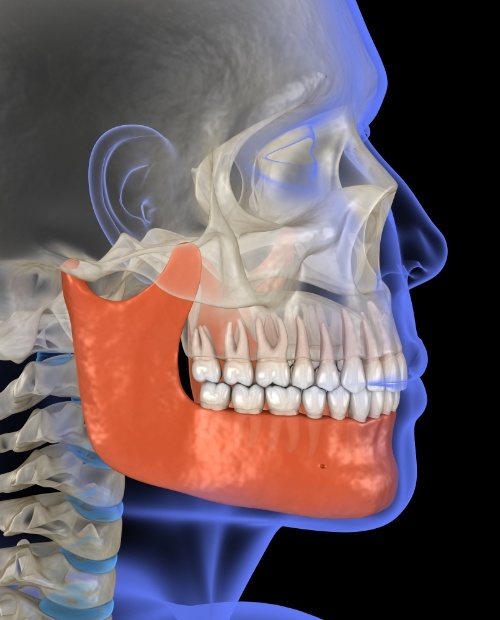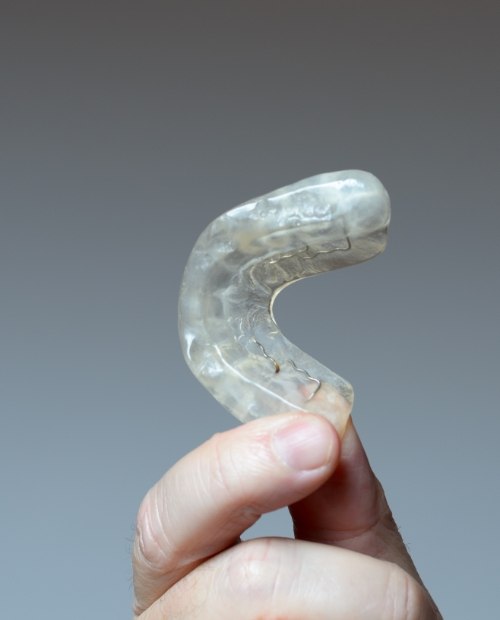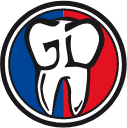TMJ Therapy – Billerica, MA
Relieving Chronic Jaw Pain with Customized Therapy
TMJ dysfunction, also sometimes referred to as TMD, is a common condition that is estimated to impact 12 percent of people in the country. Not only can it cause routine discomfort, but it can also be a sign of underlying oral issues that need to be addressed, like bite misalignment or ill-fitting dental restorations. Our team will do whatever we can to get to the bottom of the issue and help provide you with lasting relief by planning a customized TMJ therapy in Billerica, MA.
Why Choose Grateful Dentists for TMJ Therapy?
- We Accept Dental Insurance
- Customized Protective Mouthguards
- We See Patients of All Ages
What is TMJ Dysfunction?

TMJ dysfunction is when the two joints that anchor your jaw to your skull (temporomandibular joints) aren’t functioning properly due to sustaining too much force or damage. Some common signs of this condition include:
- Tenderness in the jaw
- Pain in both jaw joints
- Aching in the ears or face
- Clicking or popping when you open your mouth
- Lockjaw
- Nightly teeth grinding
Equilibration/ Occlusal Adjustments

Equilibration, or occlusal adjustment, is a simple procedure where we will check your bite and adjust the shape of your teeth to help them come together more functionally. This will ensure that one jaw joint it being overworked more than the other every time you chew your food. Sometimes, TMJ dysfunction can occur as a result of ill-fitting dental restorations as well, which we can address with equilibration.
Occlusal Splints

Occlusal splints are durable mouthguards that you’ll wear at night to slightly adjust the alignment of your jaw to take pressure off of the joints. It will also protect your teeth from grinding against each other to keep them from becoming fractured or damaged. Eventually, your occlusal splint will provide you with long-term relief by gradually altering the position of your jaw.
TMJ Treatment FAQs
Can TMJ Be Cured Permanently?
Discomfort associated with TMJ dysfunction can sometimes go away on its own. However, if your symptoms are impacting your everyday life, you should see a professional for help. Some treatment options, like BOTOX, provide temporary relief but the results aren’t usually permanent. Other options, like occlusal splints, occlusal adjustments, and equilibration, are designed to permanently address jaw tension, misalignment, and other underlying causes of TMD, giving you more lasting relief.
Can TMJ Be Fixed with Invisalign?
Sometimes, TMD is caused by the upper and lower jaws not being properly aligned and not coming together how they should. This can also be the result of crooked or crowded teeth, which unevenly distribute bite force. In these cases, bringing the jaws and teeth into proper alignment with Invisalign could alleviate TMD symptoms. Talk to your dentist to see if orthodontic treatment is the best solution for you.
Is BOTOX for TMJ Safe?
BOTOX is short for botulinum toxin. This is the bacterium Clostridium botulinum. When diluted and administered in the right dosage, BOTOX is a safe way to address TMD symptoms. There are some possible risks and side effects with treatment, but they should be minor and temporary. Some of the more common side effects include:
- Redness, bruising, and soreness around the injection site.
- Headaches in the first 48 hours
- Mild nausea
- Temporary flu-like symptoms
- Temporary drooping in the eyelids
How Long Does It Take for a TMJ Splint to Work?
Occlusal splints for TMD are usually worn at night during sleep to keep the jaw in its proper position. You may not notice symptoms diminish right away. It takes some time for your TMJs and the areas around your jaws to adjust to their new positions. After about six weeks, most patients generally experience improvement, but not complete relief. It can take anywhere from three to six months for an occlusal splint to completely resolve discomfort.



